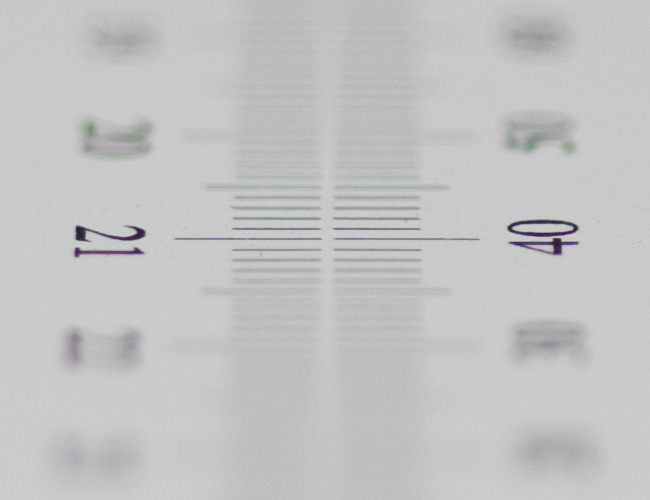|
Zeiss Makro-Planar T* 50mm f/2 ZF (FX) - Review / Test Report - Analysis |
|
Lens Reviews -
Nikon / Nikkor (full format)
|
|
Page 2 of 3

Distortion
The Makro-Planar produces only a slight degree (~0.8%) of barrel distortion which isn't really field-relevant.

The chart above has a real-world size of about 120x80cm.
Vignetting
The Makro-Planar may not be as fast as a conventional standard prime lens but it suffers from a similar amount of light falloff at max. aperture (almost 2EV). The vignetting is still visible at f/2.8 and you've to stop down to f/4 in order to resolve the issue.
We're performing our vignetting analysis based on
(uncorrected) JPEGs straight from the camera. The JPG engine of the Nikon D3x features a rather flat
gradation curve, thus has a moderate contrast characteristic, resulting in comparatively low vignetting figures - the
corresponding Canon figures are roughly 40% higher due to the more
aggressive default contrast setting.

MTF (resolution)
Macro lenses tend to be great performers and the Zeiss is no exception to the rule. At wide-open aperture the lens is already extremely sharp in the center whereas the borders/corner are a little softer. The quality increases gradually the more you stop down and the global peak is reached around f/5.6 with an excellent center and very good edge quality. Diffraction is the limiting factor beyond f/8 so even Zeiss cannot fool physics. However, the results are still usable even at f/22.
Please note that the MTF results are not directly comparable across the different systems!
Below is a simplified summary of the formal findings. The chart shows line widths
per picture height (LW/PH) which can be taken as a measure for sharpness.
If you want to know more about the MTF50 figures you may check out the corresponding
Imatest Explanations

Chromatic Aberrations (CAs)
The Makro-Planar produces a very minimal amount of lateral CAs (color shadows at harsh contrast transitions). This is not field-relevant and an excellent performance in this category.

Bokeh
The quality of the bokeh (out-of-focus blur) is naturally a major aspect for a macro lens. The Zeiss lens does a very good job here. The inner zone of out-of-focus highlights is very evenly rendered. However, due to mechanical vignetting the discs deteriorates to a "cat's eye" shape at large apertures which is less pleasing than the circular shape (which is achieved at smaller apertures). The blur in the focus transition zones is quite smooth.

Bokeh Fringing
There's a some bokeh fringing (greenish/purple halos in the focus transition zone) at f/2 but it's not overly disturbing.
The issue is somewhat resolved at f/2.8 and not really relevant anymore from f/4 onwards.
|
Move the mouse cursor over the f-stop marks below to observe the respective bokeh fringing
|
| f/2 |
f/2.8 |
f/4 |
|

|
|